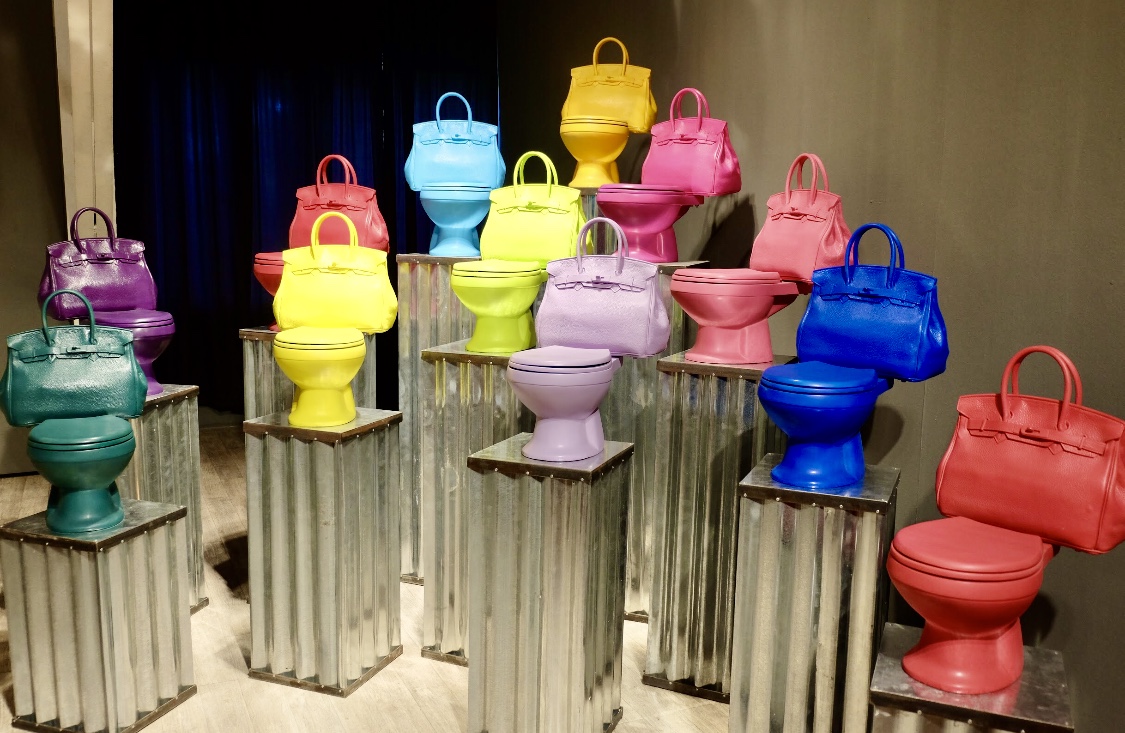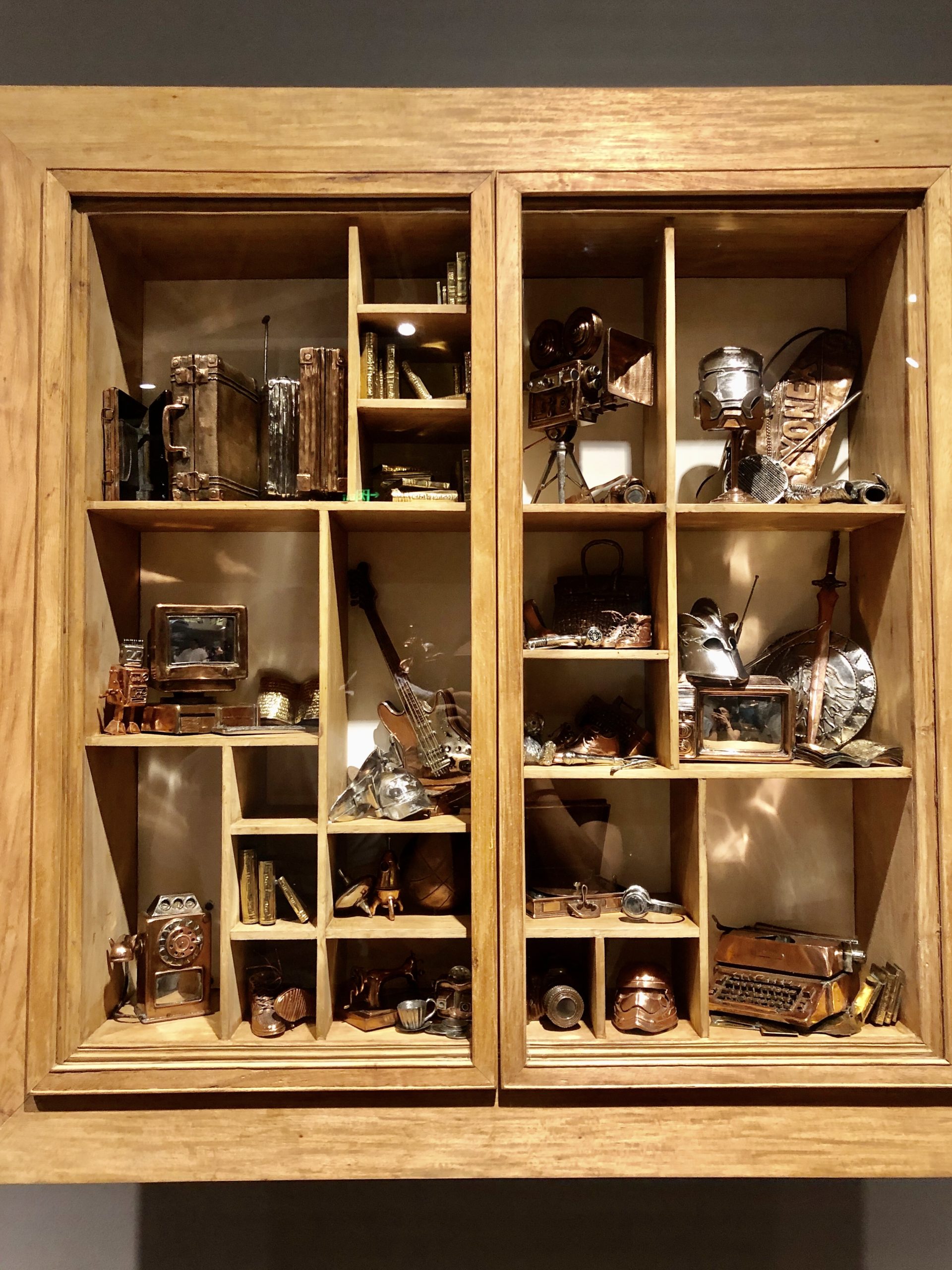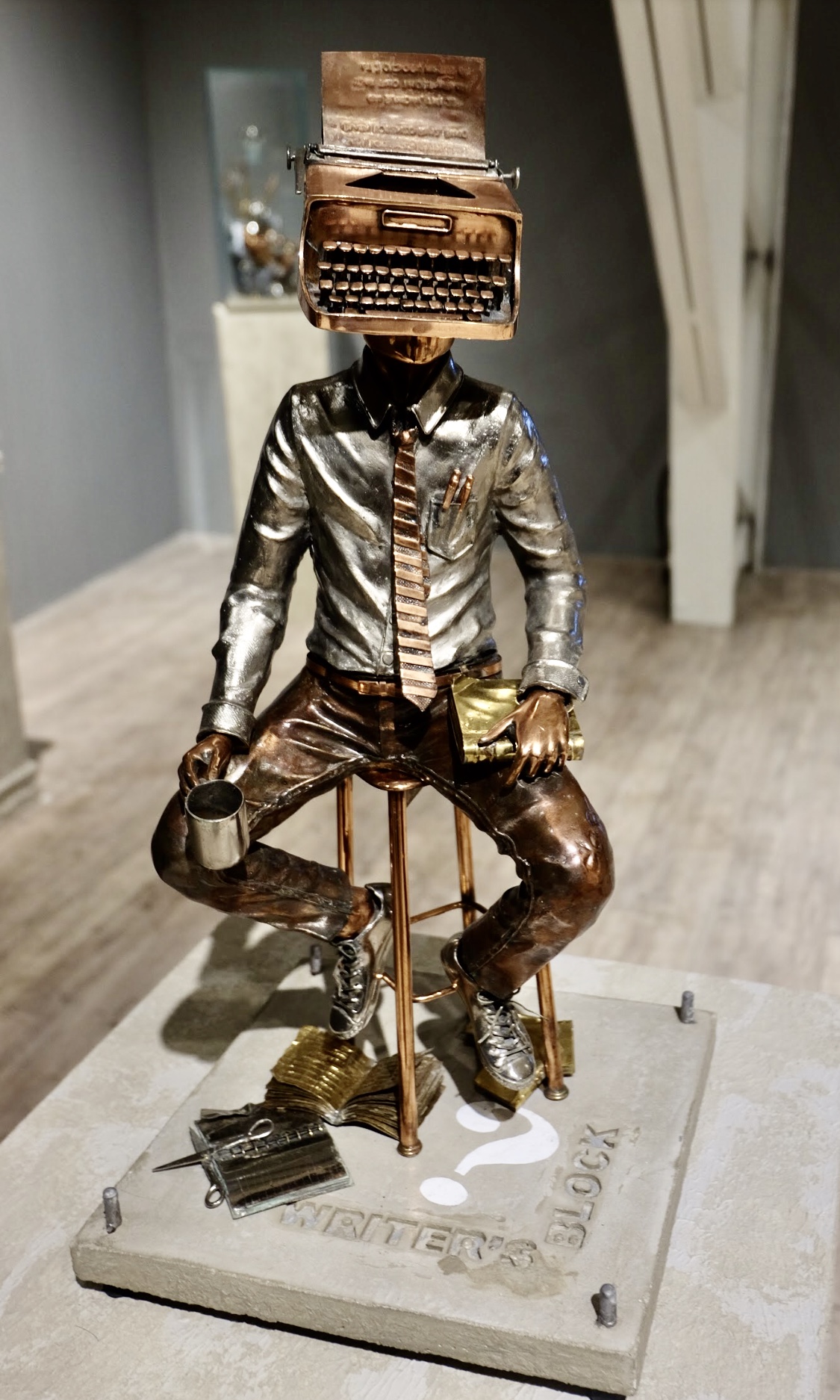
Daniel dela Cruz’s “Material Culture” at Art Cube Gallery features sculptural works and installations that show how pop-culture icons and commercial brands and trends become the markers of generations.
“It’s not trying to be materialistic,” Cruz said. “It’s wanting to belong, it’s wanting people to accept you. And it holds true for every generation.”
Capturing the culture of commodity, the art gallery, as though a mall, is filled with several recognizable brands and familiar objects. It exudes the air of commerce and abundance. As stated in the catalog, the exhibition presents “how objects that define the idea of ‘cool’ are valued by culture at a particular time, how these objects are ascribed with meaning, and in turn, how we allow meaning-vested objects to define us.”
In one of the mixed-metals sets, Dela Cruz conceived figures with a human body, but whose heads are a television, a typewriter and a telephone, inspired by generation-linked terms such as “screenshot,” “typeface” and “smartphone.” Although playful, there remains a level of seriousness because the depicted characters are themselves products and commodities of technological advancement.
A variation of the theme is presented in the cabinets-of-curiosities set. Observing from a distance where each cabinet is seen as a whole, the viewer realizes that some things are more revealing when they are hidden from the public eye. They are a profound and more complete replication of the self.

Are they not the curated fashion we present to the public? Aren’t the objects inside these cabinets systematized? As indicated in the title of one of the cabinets, “Everyone has an object with a story.”
But Dela Cruz seems to wonder whether it is the consumer’s choice to buy them or the result of effective advertisement in the mass media.
Perhaps the most recognizable set are the 50 pieces of hollow blocks with the Supreme brand on them. Titled “Hallow Block,” it shows how people venerate objects with seemingly no value and treat them as “supreme.”
Another set of cement works depicts everyday objects such as canned goods, condiment bottles and jars emblazoned with expensive brands.
Dela Cruz wants viewers to question their relationship with the materials and objects they possess. As he observes, “People are putting praise and so much worth onto an object that almost worth nothing.”
Each generation, however, has its association with commercial and pop culture. “One of the things I realized is all of these are veblen goods,” he said.

Human nature
“Each of them has different reasons attached to it, but in the end, people want objects not really for themselves, but it’s really what’s in.”
But they buy it anyway because the value is in the fulfillment of the need to belong. “It’s basically just human nature,” said the sculptor.
Exhibition catalog, raises even more questions. “Is the logo worth that much? What values do we ascribe to a logo or a brand? How much of it is hype? What values do we champion when we purchase an object without intrinsic value, except the values we ascribe to it? What exactly do we value?”
Tying up the theme of the entire exhibition is the wall-bound set of works, showing dancers dressed in an ensemble of fashionable hip-hop attire with a metallic roof background. This represents Filipino reality, said Dela Cruz.
“Despite all these material objects, material things around us, there’s that layer of reality that we cannot close our eyes to,” he said. Poverty remains. And sometimes, people would prefer spending more on other things than providing first for their basic needs.
In today’s age of the social media, the image becomes everything. But it has turned too bright that it has become blinding. The Killers asks in a popular tune, “Are we human, or are we dancer?” Through his sculptural installations, poses the same inquiry. —CONTRIBUTED INQArt Cube Gallery is at Chino Roces Extension, Makati City.








































